Richard Guest
Investigating the Common Authorship of Signatures by Off-Line Automatic Signature Verification Without the Use of Reference Signatures
May 23, 2024Abstract:In automatic signature verification, questioned specimens are usually compared with reference signatures. In writer-dependent schemes, a number of reference signatures are required to build up the individual signer model while a writer-independent system requires a set of reference signatures from several signers to develop the model of the system. This paper addresses the problem of automatic signature verification when no reference signatures are available. The scenario we explore consists of a set of signatures, which could be signed by the same author or by multiple signers. As such, we discuss three methods which estimate automatically the common authorship of a set of off-line signatures. The first method develops a score similarity matrix, worked out with the assistance of duplicated signatures; the second uses a feature-distance matrix for each pair of signatures; and the last method introduces pre-classification based on the complexity of each signature. Publicly available signatures were used in the experiments, which gave encouraging results. As a baseline for the performance obtained by our approaches, we carried out a visual Turing Test where forensic and non-forensic human volunteers, carrying out the same task, performed less well than the automatic schemes.
TypeFormer: Transformers for Mobile Keystroke Biometrics
Dec 26, 2022



Abstract:The broad usage of mobile devices nowadays, the sensitiveness of the information contained in them, and the shortcomings of current mobile user authentication methods are calling for novel, secure, and unobtrusive solutions to verify the users' identity. In this article, we propose TypeFormer, a novel Transformer architecture to model free-text keystroke dynamics performed on mobile devices for the purpose of user authentication. The proposed model consists in Temporal and Channel Modules enclosing two Long Short-Term Memory (LSTM) recurrent layers, Gaussian Range Encoding (GRE), a multi-head Self-Attention mechanism, and a Block-Recurrent structure. Experimenting on one of the largest public databases to date, the Aalto mobile keystroke database, TypeFormer outperforms current state-of-the-art systems achieving Equal Error Rate (EER) values of 3.25% using only 5 enrolment sessions of 50 keystrokes each. In such way, we contribute to reducing the traditional performance gap of the challenging mobile free-text scenario with respect to its desktop and fixed-text counterparts. Additionally, we analyse the behaviour of the model with different experimental configurations such as the length of the keystroke sequences and the amount of enrolment sessions, showing margin for improvement with more enrolment data. Finally, a cross-database evaluation is carried out, demonstrating the robustness of the features extracted by TypeFormer in comparison with existing approaches.
Mobile Keystroke Biometrics Using Transformers
Jul 15, 2022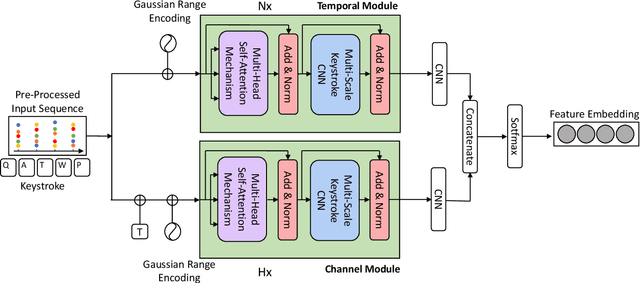
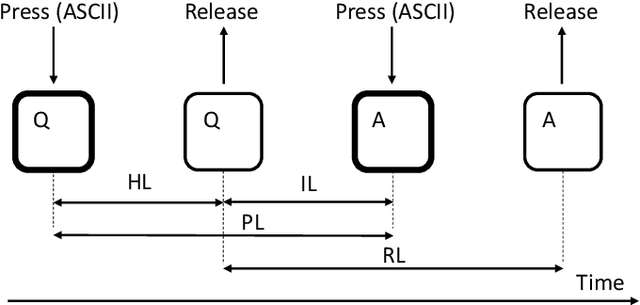
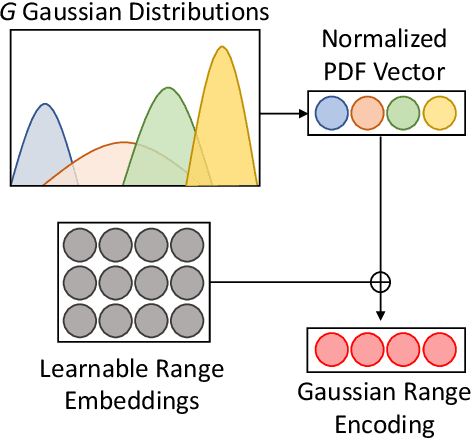

Abstract:Behavioural biometrics have proven to be effective against identity theft as well as be considered user-friendly authentication methods. One of the most popular traits in the literature is keystroke dynamics due to the large deployment of computers and mobile devices in our society. This paper focuses on improving keystroke biometric systems on the free-text scenario. This scenario is characterised as very challenging due to the uncontrolled text conditions, the influential of the user's emotional and physical state, and the in-use application. To overcome these drawbacks, methods based on deep learning such as Convolutional Neural Networks (CNNs) and Recurrent Neural Networks (RNNs) have been proposed in the literature, outperforming traditional machine learning methods. However, these architectures still have aspects that need to be reviewed and improved. To the best of our knowledge, this is the first study that proposes keystroke biometric systems based on Transformers. The proposed Transformer architecture has achieved Equal Error Rate (EER) values of 3.84% in the popular Aalto mobile keystroke database using only 5 enrolment sessions, outperforming in large margin other state-of-the-art approaches in the literature.
Exploring Transformers for Behavioural Biometrics: A Case Study in Gait Recognition
Jun 03, 2022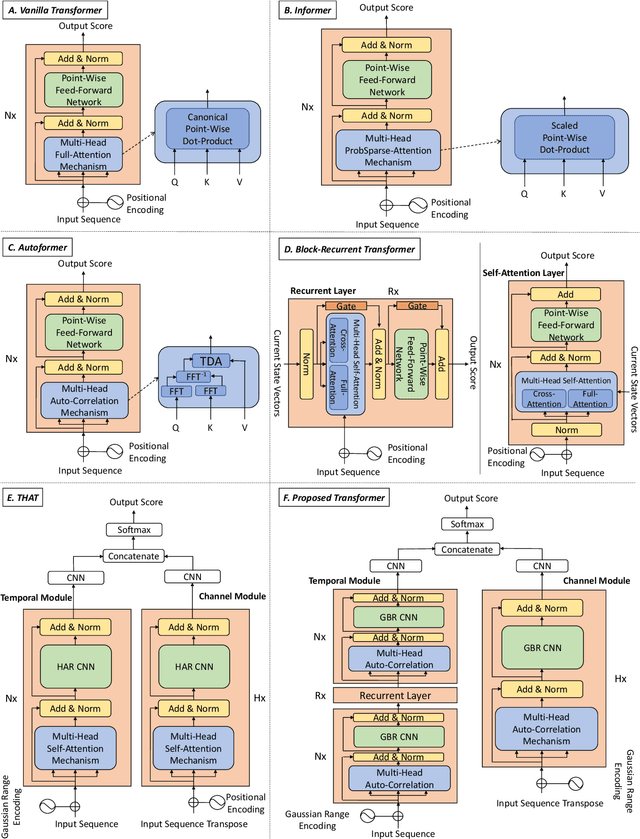
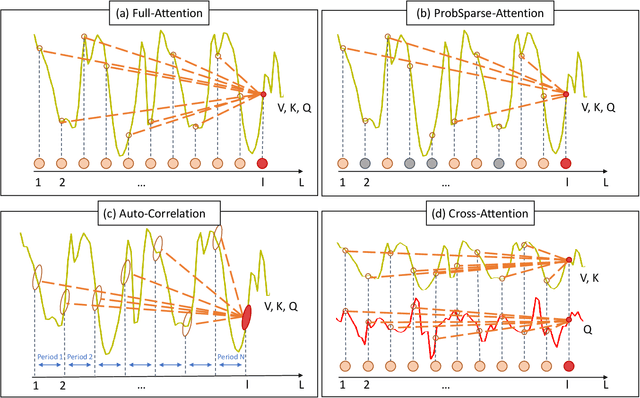
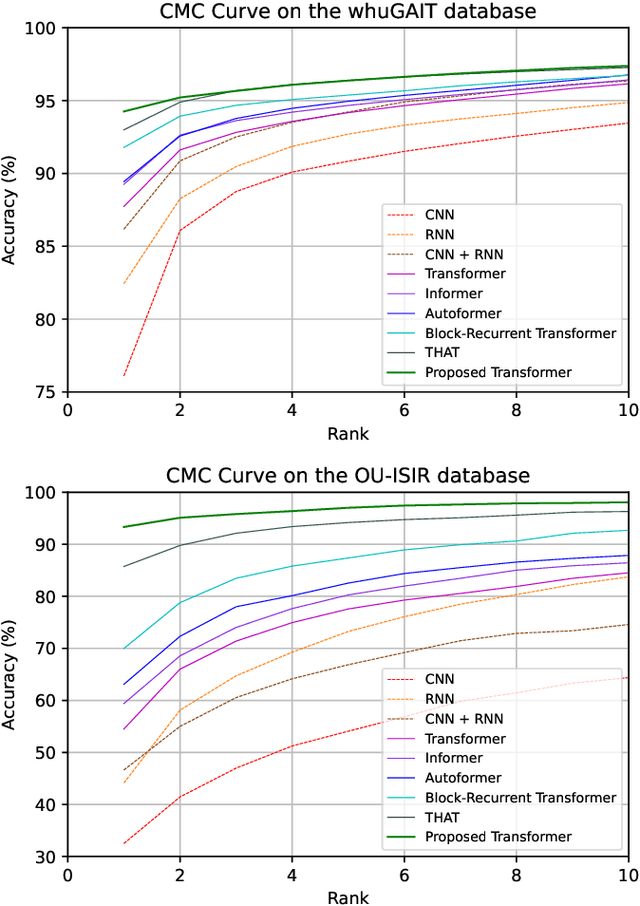
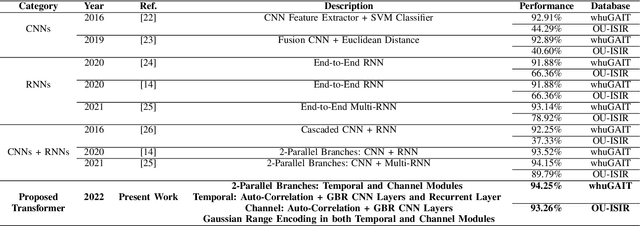
Abstract:Biometrics on mobile devices has attracted a lot of attention in recent years as it is considered a user-friendly authentication method. This interest has also been motivated by the success of Deep Learning (DL). Architectures based on Convolutional Neural Networks (CNNs) and Recurrent Neural Networks (RNNs) have been established to be convenient for the task, improving the performance and robustness in comparison to traditional machine learning techniques. However, some aspects must still be revisited and improved. To the best of our knowledge, this is the first article that intends to explore and propose novel gait biometric recognition systems based on Transformers, which currently obtain state-of-the-art performance in many applications. Several state-of-the-art architectures (Vanilla, Informer, Autoformer, Block-Recurrent Transformer, and THAT) are considered in the experimental framework. In addition, new configurations of the Transformers are proposed to further increase the performance. Experiments are carried out using the two popular public databases whuGAIT and OU-ISIR. The results achieved prove the high ability of the proposed Transformer, outperforming state-of-the-art CNN and RNN architectures.
GaitPrivacyON: Privacy-Preserving Mobile Gait Biometrics using Unsupervised Learning
Oct 08, 2021
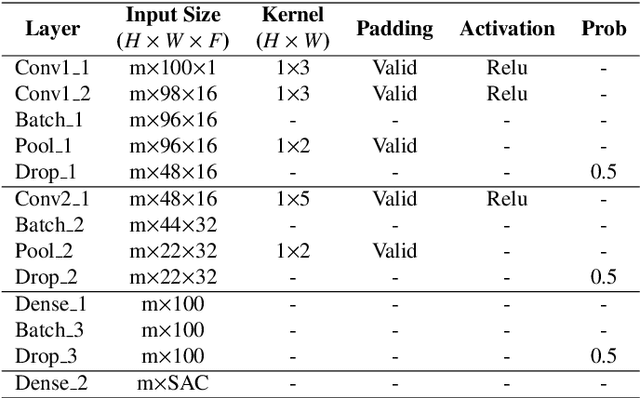
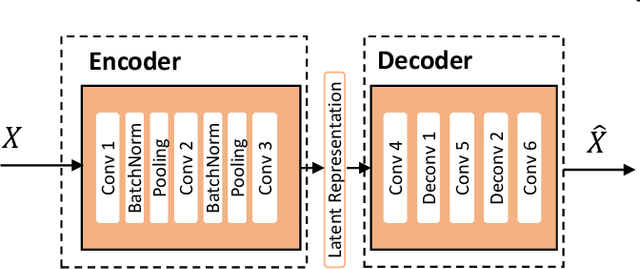
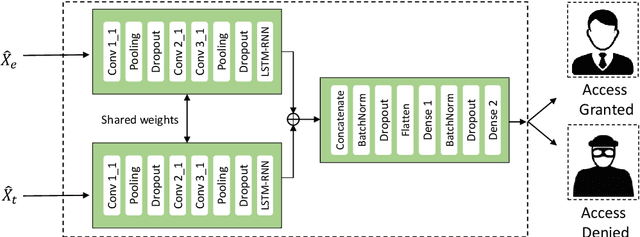
Abstract:Numerous studies in the literature have already shown the potential of biometrics on mobile devices for authentication purposes. However, it has been shown that, the learning processes associated to biometric systems might expose sensitive personal information about the subjects. This study proposes GaitPrivacyON, a novel mobile gait biometrics verification approach that provides accurate authentication results while preserving the sensitive information of the subject. It comprises two modules: i) a convolutional Autoencoder that transforms attributes of the biometric raw data, such as the gender or the activity being performed, into a new privacy-preserving representation; and ii) a mobile gait verification system based on the combination of Convolutional Neural Networks (CNNs) and Recurrent Neural Networks (RNNs) with a Siamese architecture. The main advantage of GaitPrivacyON is that the first module (convolutional Autoencoder) is trained in an unsupervised way, without specifying the sensitive attributes of the subject to protect. The experimental results achieved using two popular databases (MotionSense and MobiAct) suggest the potential of GaitPrivacyON to significantly improve the privacy of the subject while keeping user authentication results higher than 99% Area Under the Curve (AUC). To the best of our knowledge, this is the first mobile gait verification approach that considers privacy-preserving methods trained in an unsupervised way.
 Add to Chrome
Add to Chrome Add to Firefox
Add to Firefox Add to Edge
Add to Edge